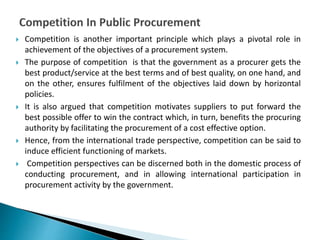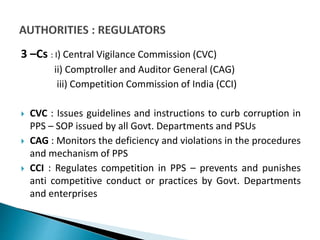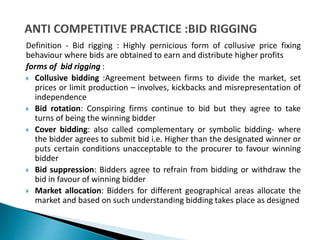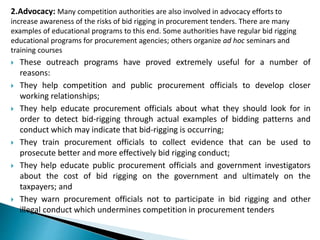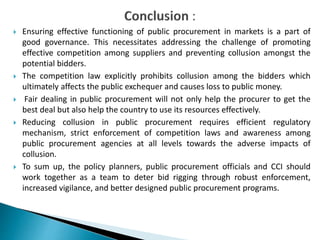Public procurement involves government agencies obtaining goods, services, and technologies using public funds. It contributes 15-20% of GDP in India and is governed by rules like the General Financial Rules. Major areas of public procurement include defense, railways, health, and telecom which together account for around 50% of public procurement. The primary objective is to achieve value for money by procuring best goods and services at lowest cost. Common procurement mechanisms involve a tendering process with separate evaluation of technical and financial bids. Some examples of bid rigging in public procurement cases in India include companies submitting identical bids or dividing markets. Factors that can indicate bid rigging include identical pricing, last minute adjustments to bids, and suppliers meeting privately before submitting






